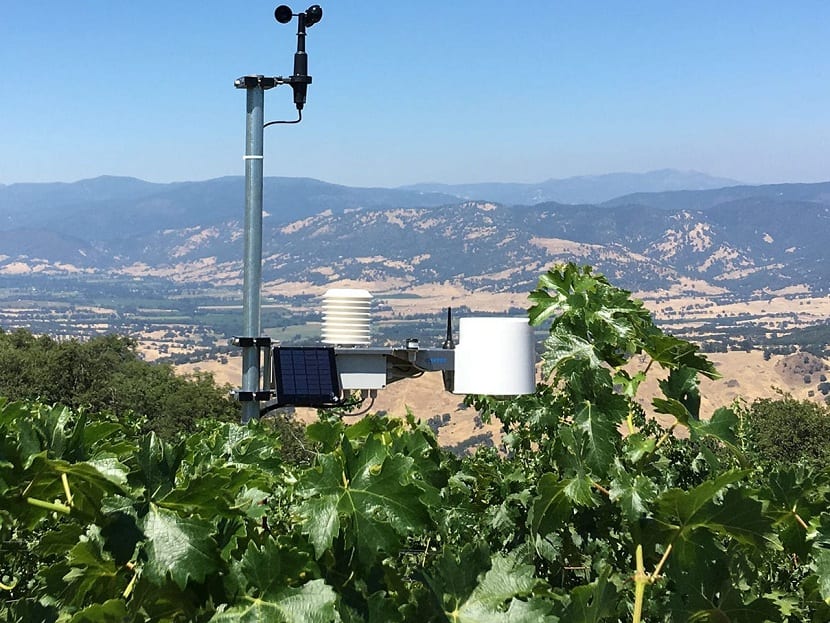
Surely you have ever heard about the phenomenon of evapotranspiration when talking about plants. In effect, it is a phenomenon that occurs when plants lose water from their tissues due to two phenomena that act as a whole: evaporation on the one hand and perspiration on the other. Evapotranspiration can be defined as the joint consideration of these two processes at the same time.
In this post we are going to show you how this mechanism works and the importance it has in the water cycle.
What is evapotranspiration

We begin by defining well the processes that are carried out simultaneously by those we are mentioning. The first process is evaporation. It is a physical phenomenon that marks a change of state of the water from liquid to vapor. This also includes the sublimation processes that take place when water is in the form of snow or ice and goes directly to vapor without going through a liquid state.
Evaporation takes place from the surface of the soil and vegetation as soon as precipitation occurs. Due to either the temperatures, the action of solar radiation or the wind, the drops of water that had precipitated end up evaporating. Another place where evaporation occurs is on water surfaces such as rivers, lakes, and reservoirs. It also occurs from the ground with infiltrated water. Se usually evaporates from the deepest zone to the most superficial. This is water just infiltrated or in discharge areas.
On the other hand, we have the perspiration process. It is a biological phenomenon that takes place in plants. It is the process by which they lose water and pour it into the atmosphere. These plants take water through the roots from the ground. Part of this water is used for their growth and vital functions and the other part they transpire into the atmosphere.
Measurements and utility

Since these two phenomena are difficult to measure separately, they occur together as evapotranspiration. In most of the cases this is studied, you need to know the total amount of water that is lost to the atmosphere and the process by which it is lost does not matter. These data are needed to make water balances of the amount of water that falls in relation to that lost. The result will be a positive net balance, if water accumulates or we have a surplus of resources, or negative, if we lose accumulated water or lose resources.
For those who study the evolution of water, these water balances are very important. These studies are focused on the quantification of the water resources of an area. That is to say, all the water that rains subtracted from the water that is lost by evapotranspiration, will be the volume of water available that we will have roughly. Of course, we must also take into account the amount of water that infiltrates depending on the type of soil or the existence of aquifers.
Evapotranspiration is an important variable in the field of agronomic sciences. It is considered an important element considering the water needs that crops have so that they can develop correctly. There are many mathematical formulas used to know the necessary evapotranspiration data and water balances.
The unit with which it is measured is in mm. To give you an idea, a hot summer day is capable of evapotranspiration between 3 and 4 mm. Sometimes, if the areas measured are abundant in vegetation, one can also speak of cubic meters per hectare of land.
Types of evapotranspiration

In order to be able to differentiate the data well within a water balance, the evapotranspiration data have been divided in several ways. The first is potential evapotranspiration (ETP). This data is what reflects to us what would be produced from soil moisture and the vegetation cover were in optimal conditions. That is, the amount of water that would evaporate and transpire if environmental conditions were optimal for it.
On the other hand we have the actual evapotranspiration (ETR). In this case, we measure the actual amount of water that evapotranspires based on the existing conditions in each case.
In these definitions it is evident that the ETR is less than or equal to the ETP. This will happen 100% of the time. For example, in a desert, the ETP is about 6mm / day. However, the ETR is zero, because there is no water to evapotranspire. On other occasions, both types will be the same, as long as the optimal conditions are given and there is a good plant cover.
It should not be mentioned that evapotranspiration is a factor that does not interest us at all. It means losing water resources that cannot be used. We must also bear in mind that it is one more element of the hydrological cycle of water and that, sooner or later, everything that has evaporated will one day precipitate again.
Importance in agriculture

All of the above definitions are critical to crop engineering calculations. When we use ETP and ETR values in hydrology, so are only taken into account within the total balance of a basin. These elements are those that indicate the amount of water that is lost from what has precipitated. To take into account the volume of surface water available, such as in a reservoir, infiltration is also an element that reduces the amount of available water.
The importance of evapotranspiration increases more when we get into fields of agriculture. In these cases, the difference between ETP and ETR can be a deficit. In agriculture this difference is wanted to be zero, since it will indicate that the plants always have enough water to perspire when they need it. Thus we save irrigation water and, therefore, we have a reduction in production costs.
Irrigation water demand is called this difference between evapotranspirations.
I hope that with this information it is completely clear the importance and usefulness of evapotranspiration.